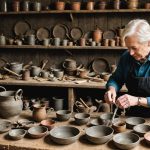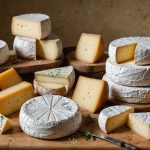Overview of Traditional British Tapestry Weaving
Traditional British tapestry weaving is a remarkable aspect of British handicrafts with a deep historical significance. For centuries, tapestry weaving has been woven into the fabric of British culture, showcasing intricate designs and storytelling through art. Historically, these tapestries served as a method to depict historical events, convey power, or simply adorn castles and grand homes.
The techniques and materials employed in traditional British tapestry weaving are a testament to the skill and dedication passed down through generations. Typically, wool and silk are used for weaving, favoured for their durability and flexibility. The meticulous process involves weaving perpendicular threads – the warp and weft – to create detailed patterns and images.
Also read : Explore the Top UK Festivals for a Deep Dive into Enchanting British Folk Tales
Today, British tapestry artistry continues to thrive, albeit with a contemporary twist. While the traditional methods remain prevalent, modern influences and innovations have introduced new textures and imagery. There has been a resurgence in tapestry weaving workshops, where enthusiasts can learn about and engage in this age-old craft. These workshops play a crucial role in keeping the art form alive, ensuring its relevance and vitality in modern British culture.
This enduring craft continues to captivate those who appreciate the beauty and complexity of fabric art, affirming its place in both history and modern artistry.
Additional reading : Discover the art of traditional british textile dyeing: a tourist”s guide to immersive, hands-on workshops
Criteria for Selecting Top Workshop Destinations
Selecting the perfect tapestry workshop is crucial to enhancing your craft skills. Expert instructors play a pivotal role. Their credentials—such as professional experience and teaching practice—validate a workshop’s quality. An instructor’s expertise ensures participants receive guidance aligned with the latest techniques and trends. Before enrolling, verify the instructor’s background to make sure they align with your learning goals.
Accessibility and the location of these workshops across the UK also significantly impact participation. Many venues are strategically placed in both urban areas and tranquil countryside settings, catering to varied geographical needs. Locations should be convenient, with considerations for public transport and accommodations if required.
A vital selection criterion is the range of skill levels catered to. Whether you are a beginner eager to weave your first masterpiece or an advanced artist refining complex techniques, the workshop should offer tailored experiences. Some workshops offer tiered classes, accommodating diverse skill sets and ambitions.
Lastly, understanding the workshop features such as class size, materials provided, and studio facilities can further recognize an applicant’s specific needs. Selecting the right workshop involves weighing these factors to create a rewarding learning experience.
Top UK Destinations for Tapestry Weaving Workshops
Discovering the joy of tapestry weaving can best be achieved through workshops located in the UK’s most charming destinations. These weaving retreats allow both beginners and experienced weavers to deepen their skills amidst inspiring settings.
Location: The City of London
London offers some of the best tapestry workshops with a modern twist of urban flair. These workshops are often hosted in prestigious art schools and community centres, providing access to exceptional instructors and diverse techniques. Participants can explore both traditional and contemporary methods while interacting with a vibrant community of artists.
Location: The Cotswolds
In the tranquil beauty of the Cotswolds, tapestry weaving workshops focus on embracing nature within the creative process. Unique features include retreats held in historic stone cottages, where participants immerse themselves in serene landscapes. The workshops here often blend weaving with cultural activities, allowing crafters to enjoy local craftsmanship and hospitality.
Location: Yorkshire
Yorkshire, with its rich textile heritage, offers workshops that are deeply rooted in history. The region’s weaving retreats are renowned for fostering a strong sense of community. Workshops often include visits to museums and historical sites, providing context to the craft’s evolution. Engage with seasoned weavers who share traditional knowledge passed down through generations.
Workshop Details: Dates, Costs, and Participation
Delving into the intricacies of workshop details, you’ll find that tapestry workshops are generally offered multiple times a year. These sessions vary from brief, one-day introductions to intensive, week-long immersions. This range allows participants to choose a duration that best suits their schedules and learning preferences.
The costs for tapestry workshops can differ significantly depending on factors such as the length of the class, the expertise of the instructor, and the resources provided. A simple one-day class might start at around £50, while a comprehensive week-long workshop could extend to several hundreds of pounds. Discounts may be available for early registration or group bookings, providing budget-friendly options for the passionate learner.
To ensure your spot in any of the upcoming weaving classes, early registration is highly recommended. Most workshops have a limited number of participants to maintain an intimate learning environment. Registration usually involves completing an online form and making a deposit or full payment, which can often be done through the workshop’s official website.
Preparing for your workshop participation is crucial. While some classes may provide all necessary materials, others might require you to bring specific items. Checking with the workshop organizer beforehand ensures a smooth start to your weaving journey.
Reviews and Testimonials from Participants
Engaging with personal experiences shared by past tapestry workshop testimonials offers insightful perspectives into the profound impact workshops have on attendees. Participants frequently emphasize the enhancement of their artistic expression and the substantial development of their skills. This feedback underscores the ability of workshops to enrich and transform their creative journey.
In particular, many students highlight the supportive community atmosphere that permeates these workshops. This creates a nurturing space for all participants, fostering both personal growth and collective well-being. The workshops seem to function as a collaborative environment, where individuals can explore beyond their comfort zones with confidence.
Participant reviews frequently spotlight how workshops have served as catalysts for deepening their understanding and appreciation of tapestry art. Attendees often leave with renewed artistic vision, feeling encouraged to further explore their creativity. For many, these experiences extend beyond skill enhancement, also nurturing their passion for artistry.
Testimonials often speak to the sense of belonging felt during the workshops. Whether novice or experienced, each participant is acknowledged, making workshops not just educational, but deeply personal and enriching. This results in an engaging tapestry of student experiences that resonate long after the workshop ends.
The Cultural Importance of Tapestry Weaving in the UK
Tapestry weaving holds a significant place in British cultural heritage as an art form rich in history and intricacy. It has been an essential part of British art history, showcasing the grandeur of royal courts and aristocracy. This ancient craft has transcended time, serving as a remarkable medium for both storytelling and expression. Historically, tapestry significance manifested through vibrant depictions of epic narratives and historical events, becoming synonymous with national identity.
In today’s world, tapestry weaving has evolved, continuing to capture the imagination of contemporary artists while preserving traditional techniques. Modern adaptations have seen the infusion of new materials and innovative designs. This fusion of the old and new not only keeps the craft alive but also broadens its appeal to wider audiences. By honouring traditional methods, today’s artists ensure the preservation of British arts.
Tapestries continue to narrate stories, express societal changes, and engage audiences, all while exhibiting the artisans’ skillful handiwork. The versatility of tapestry weaving as an art form ensures its continued relevance, reinforcing its cultural significance in the UK. Artists and enthusiasts alike work diligently to sustain and promote this cherished tradition for future generations, highlighting its importance as a national treasure.
Visual Insights into Tapestry Weaving Workshops
Visual documentation plays a crucial role in tapestry workshops, offering insights into the intricate weaving process. Capturing tapestry workshop imagery allows enthusiasts and learners an in-depth look at the artistry and technique involved in creating tapestries.
Photographic highlights provide a window into workshops in action. These images often depict the careful hands of artisans at work, skillfully maneuvering threads and looms to bring designs to life. Such imagery not only showcases the delicate techniques employed but also brings the tactile and colorful world of tapestry weaving to those unable to attend in person.
Visual representations of the finished tapestry works are equally significant. They serve as both inspiration and a testament to the dedication and skill required in tapestry making. Through images, one can appreciate the complex patterns and vibrant colors that define each piece, a celebration of craftsmanship.
The use of visuals is indispensable in understanding the craftsmanship that goes into tapestry weaving. These images communicate details that words alone cannot convey, offering a compelling view that encourages a deeper appreciation of this traditional art form. They serve as an essential resource for both learning and admiration, bridging the gap between education and creativity.











